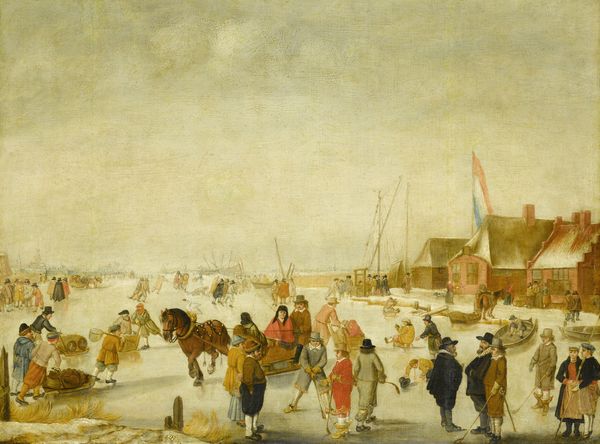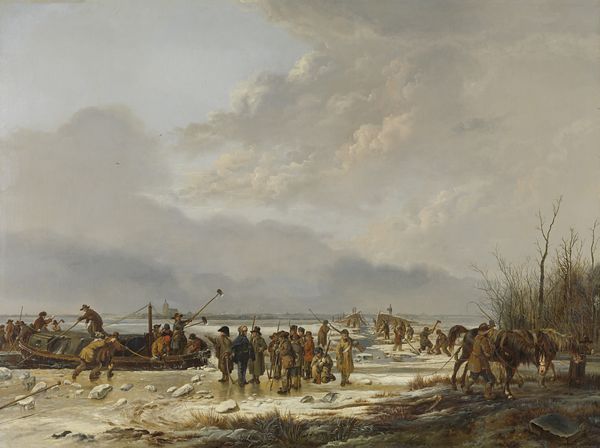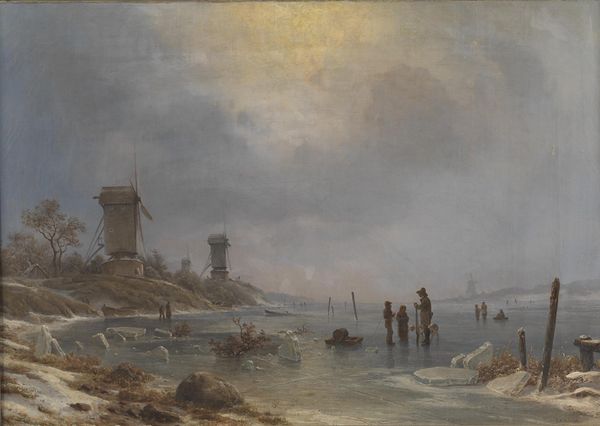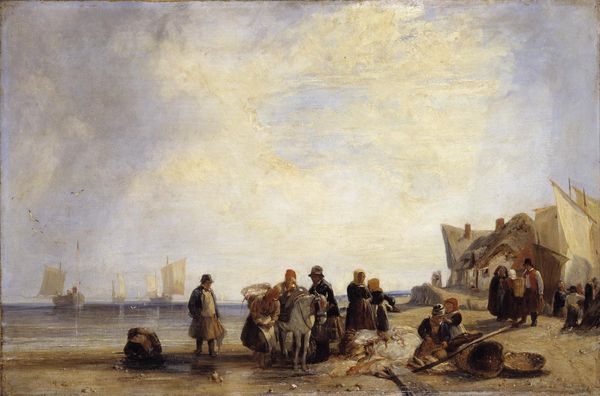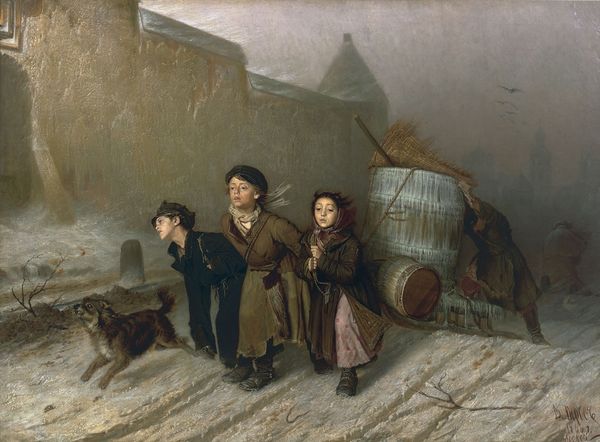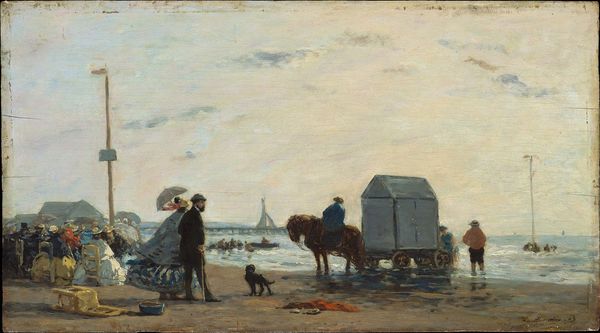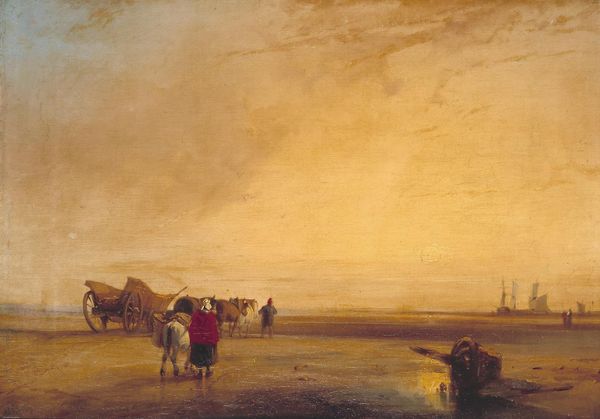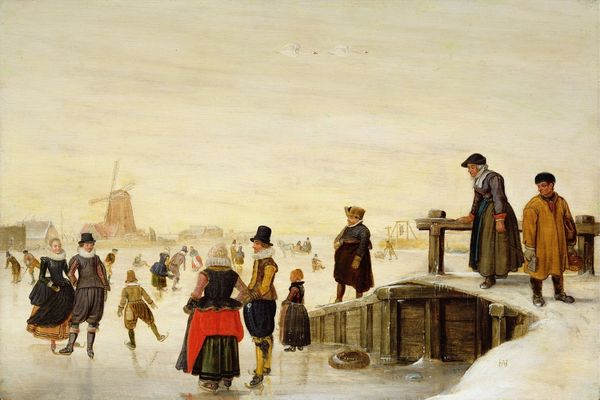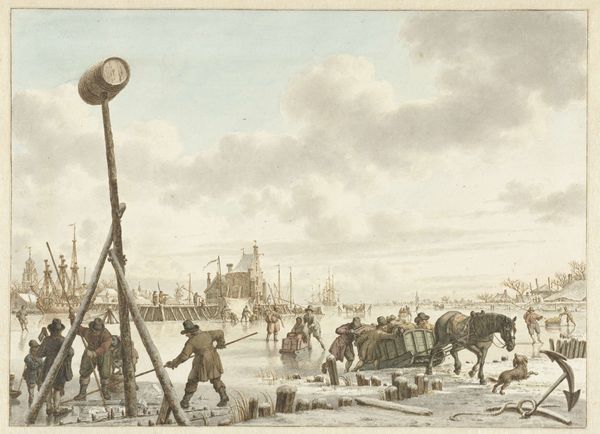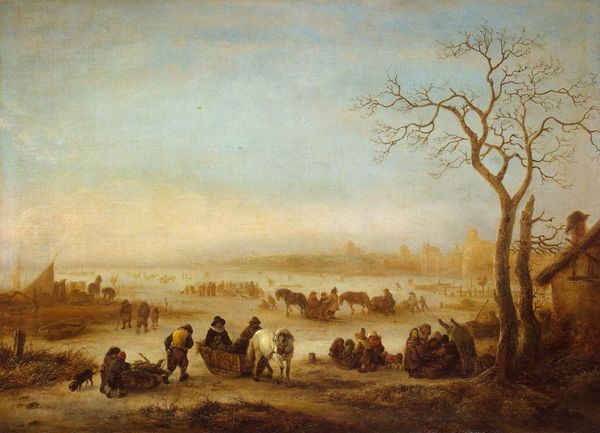
oil-paint
#
oil-paint
#
landscape
#
figuration
#
oil painting
#
romanticism
#
genre-painting
Dimensions: height 40.5 cm, width 58.3 cm, thickness 3.9 cm, depth 11 cm
Copyright: Rijks Museum: Open Domain
Theodor Hildebrandt’s painting shows us a winter scene on the Neva River in St. Petersburg, likely made with oil paints on canvas. The painting’s hazy atmosphere and muted palette speak to the materiality of a northern winter and the realities of life for working-class families. Notice how the figures are bundled in thick, dark clothing, their forms softened by the diffused light. In the foreground a woman pulls a sled with a child, while another man pushes from behind. The surface of the ice is rendered with thin, translucent layers of paint, capturing the way it reflects and refracts the pale winter light. Hildebrandt’s technique, in its very subtlety, directs our attention to the lives of those who depended on the river for their livelihoods. The amount of work required to simply move across the icy landscape becomes apparent, highlighting the social and economic realities of 19th-century Russia. By focusing on the texture and tone, we gain a deeper understanding of the relationship between materials, making, and context, moving beyond the surface of the image to appreciate the full story it tells.
Comments
No comments
Be the first to comment and join the conversation on the ultimate creative platform.
